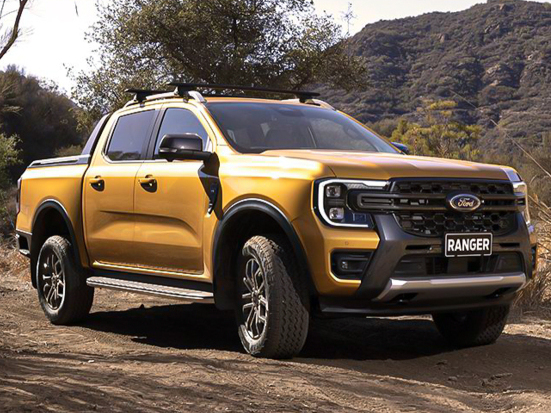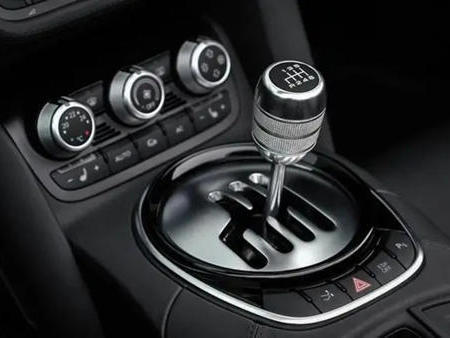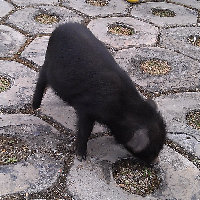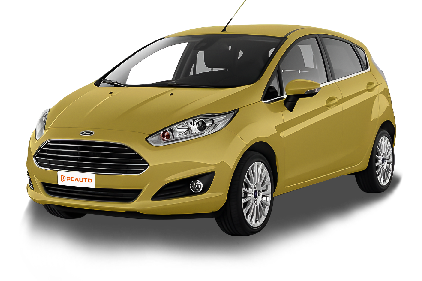Q
Are Ford Fiestas cheap to maintain?
In Malaysia, the maintenance cost of the Ford Fiesta is relatively economical. Especially when compared with European or Japanese models in the same class, the costs of routine maintenance such as oil changes and filter replacements are quite reasonable, and the supply of original parts is also relatively abundant. Since the Fiesta has a relatively mature mechanical structure and the repair technology is widely spread, most local Ford - authorized service centers or third - party repair shops can provide cost - effective services. However, it is recommended to choose original maintenance first to ensure the warranty rights.
To expand a bit, the climate and road conditions in Malaysia have specific requirements for vehicle maintenance. For example, the high - temperature and humid environment requires more frequent inspections of the cooling system and air - conditioning filters. Frequent short - distance urban driving may increase the risk of carbon deposits, so it is recommended to add fuel additives regularly. If you are considering a used car, the Fiesta has a medium resale value, but the maintenance cost is still controllable, making it suitable for young car owners on a tight budget.
Overall, as long as you follow the regular maintenance plan and choose a reliable service channel, the long - term ownership cost of the Fiesta will not be too high.
Special Disclaimer: This content is published by users and does not represent the views or position of PCauto.
Related Q&A
Q
Is a Ford Fiesta better than a Focus?
In the Malaysian market, the Ford Fiesta and Focus are positioned differently, catering to consumers with different needs. As a small car, the Fiesta excels in flexible handling and fuel economy, making it a great choice for urban commuting, especially in busy traffic areas like Kuala Lumpur. Its compact body makes parking a breeze, and the 1.5L three - cylinder engine strikes a good balance between power and fuel consumption.
On the other hand, the Focus is a compact car with more spacious interior, which is particularly suitable for family users. Its 1.5L EcoBoost engine delivers stronger power performance, ensuring a more stable drive at high speeds. The rear - legroom of the Focus is significantly better than that of the Fiesta.
Both cars are equipped with the SYNC in - vehicle system, but the Focus may offer more advanced driving assistance features in its high - end versions. It's worth noting that in Malaysia's rainy climate, the Focus has a slightly better passability due to its higher ground clearance, while the Fiesta's lightweight body allows for more sensitive handling on slippery roads.
When making a choice, one needs to weigh the space requirements and usage scenarios. If you often carry family members and have a sufficient budget, the Focus is more practical. However, if you mainly commute alone and prioritize fuel efficiency, the Fiesta offers better value for money. Both models have local after - sales service networks, providing similar levels of maintenance convenience.
Q
Is the Ford Fiesta a big car?
The Ford Fiesta isn't a large vehicle. It belongs to the B-segment (subcompact car category). Its length varies by model. For instance, the Fiesta Sport 1.5 is 3,982 millimeters long, while the Fiesta Sedan Titanium 1.5 stretches to 4,323 millimeters. It's about 1,722 millimeters wide and around 1,489 millimeters tall. These dimensions are typical of subcompact cars, giving it nimble handling on city roads.
This car usually seats five people. Although the sedan version has a larger 471-liter trunk, the 276-liter trunk of the hatchback version better meets the capacity standard of subcompact cars, making it ideal for daily commuting and small families. The compact body size also results in better fuel economy. The official fuel consumption of some models can be as low as 5.3 liters per 100 kilometers, which is another advantage of this subcompact car.
Q
How much full tank does a Ford Fiesta have?
The fuel tank capacities of different models of the Ford Fiesta are all 43 liters. This capacity is just average for a B-segment small car. It can meet the needs of daily commuting and some short-distance trips, reducing the hassle of frequent refueling. When actually refueling, since the fuel tank capacity calibrated by the manufacturer is up to the safety limit, there is still space from the safety limit to the tank opening. So, the actual refueling amount may exceed 43 liters. Car owners can check the remaining fuel through the fuel gauge with the markings "E" and "F" on the right side of the in-car fuel display. When the pointer is close to "E", it means the fuel is almost running out, and when it's close to "F", it means there is plenty of fuel. This makes it convenient for car owners to reasonably arrange their trips and refueling plans.
Q
Is a Ford Fiesta economical?
The Ford Fiesta is truly an affordable small car in the Malaysian market. It has good fuel economy, especially the version equipped with a 1.5-liter Ti-VCT naturally aspirated engine. Its urban fuel consumption is about 6.5 liters per 100 kilometers, and it can drop to around 5 liters per 100 kilometers during highway cruising. This can save fuel costs for both daily commuting and long-distance driving. The maintenance cost of the Fiesta is also relatively reasonable. The parts are in sufficient supply and the prices are moderate, making it suitable for consumers with limited budgets.
Moreover, the Fiesta has flexible handling. Its body size is suitable for the narrow city roads in Malaysia, and it's easy to park. If you're looking for a more fuel-efficient option, you can pay attention to the version with an Ecoboost turbocharged engine. Although it has stronger power, the fuel consumption still remains at a good level.
In Malaysia's hot and rainy climate, the Fiesta's air - conditioning system has good cooling performance. Coupled with its reliable mechanical structure, it's an economical small car suitable for local use. Of course, when buying a car, besides fuel consumption, you also need to comprehensively consider factors such as insurance, road tax, and maintenance costs. It is recommended that you take a test drive in person and compare models in the same class before making a decision.
Q
How many Litres per 100km is a Ford Fiesta?
The fuel consumption of the Ford Fiesta varies depending on the specific model and powertrain configuration. Generally, the version equipped with a 1.5-liter naturally aspirated engine has a fuel consumption of about 5.5 to 6.5 liters per 100 kilometers under combined driving conditions. The version with a 1.0-liter EcoBoost turbocharged engine is even more fuel-efficient, approximately between 4.5 and 5.5 liters per 100 kilometers. The actual fuel consumption is also affected by driving habits, road conditions, and vehicle maintenance. For consumers in Malaysia, the Fiesta's fuel economy is quite cost - effective, especially suitable for urban commuting. Considering the relatively high fuel prices in Malaysia, choosing a fuel - efficient car can effectively reduce daily vehicle - using costs. In addition, the Ford Fiesta is also popular for its agile handling and compact body size, which is very suitable for navigating through the narrow city roads in Malaysia. If you're particularly sensitive to fuel consumption, it's recommended to regularly maintain your vehicle, keep the tire pressure normal, and adopt a smooth driving style. These measures can help further reduce fuel consumption.
Q
Is the Ford Fiesta spacious?
As a small hatchback designed primarily for city driving, the space performance of the Ford Fiesta needs to be evaluated in the context of its vehicle type positioning. Take the commonly - seen five - door version in the Malaysian market as an example. The front seats offer ample space for adults under 175 cm in height, but the rear legroom is relatively tight, making it more suitable for children or short - distance rides. The standard luggage compartment volume is 292 liters, which can meet the needs of daily shopping. The cargo - carrying capacity can be further expanded by folding down the rear seats.
It's worth noting that the Fiesta's cabin design features an optimized horizontal layout, which provides good comfort for two passengers. However, if you often need to carry five people on long - distance trips, it may feel cramped. For Malaysian consumers, this type of small car has the advantage of being able to maneuver flexibly in congested cities like Kuala Lumpur and is also more convenient to park.
Similar - sized models in the same class include the Honda Jazz and the Toyota Yaris, each with its own unique features in terms of space utilization. For instance, the Jazz's Ultra seat design allows for more variable combinations. It is recommended that potential buyers visit the showroom to have a hands - on experience based on the number of family members and the main usage scenarios. In particular, they should test the rear knee space and the convenience of getting in and out of the car.
The low fuel consumption and road tax exemption policy for small cars in Malaysia are also practical factors worth considering.
Q
Why is the Ford Fiesta so fun to drive?
The Ford Fiesta is a blast to drive, mainly thanks to its nimble body size and precise chassis tuning. This small car performs exceptionally well on Malaysia's narrow and winding roads. Its lightweight body, paired with the 1.5L Ti - VCT engine, offers linear power output. The 6 - speed PowerShift dual - clutch transmission shifts smoothly and quickly. The electric power steering system is light and flexible at low speeds and becomes stable at high speeds. This kind of dynamic performance is especially suitable for the complex road conditions in the urban - rural fringe areas of Malaysia.
It's worth mentioning that the torsion beam rear suspension of the Fiesta has undergone sporty tuning. It provides sufficient support while maintaining comfort. Combined with the short wheelbase design, it controls the body roll well when cornering, giving the driver full confidence.
For Malaysian consumers, the Fiesta has an easily overlooked advantage: its relatively narrow body width allows it to navigate through crowded urban areas and traditional old neighborhoods more calmly. This feature is particularly useful in traffic - congested cities like Kuala Lumpur.
In addition, the SYNC in - car entertainment system equipped in this model supports voice control, enabling the driver to operate multimedia functions safely while enjoying the driving pleasure. This design concept that combines practicality and fun is an important reason why the Fiesta remains popular in the Malaysian market.
Q
How far can a Ford Fiesta go on a full tank?
The cruising range of the Ford Fiesta with a full tank of fuel mainly depends on the vehicle model's fuel tank capacity and actual fuel consumption performance. Take the common 1.5L naturally aspirated version in Malaysia as an example. Its fuel tank capacity is about 42 liters. According to the official data, the combined fuel consumption is about 5.5L per 100km. Theoretically, it can travel about 760 kilometers on a full tank. However, the actual cruising range will be affected by factors such as driving habits, road conditions, and air - conditioning usage. For instance, in congested urban areas, the range may drop to 600 kilometers, while driving at a constant speed on the highway may allow it to exceed 800 kilometers.
It's worth noting that the quality of RON95 gasoline in Malaysia and the hot climate may slightly affect fuel efficiency. It is recommended that car owners perform regular maintenance, such as replacing the air filter and spark plugs, to maintain the best fuel - consumption performance. Meanwhile, Fiesta models from different years may have slight variations in cruising range due to engine tuning differences. If you want a more accurate estimate, you can observe the average fuel - consumption display on the dashboard and calculate the real - time cruising range based on the remaining fuel in the tank.
Q
Is a Ford Fiesta a good beginner car?
For beginners in Malaysia, the Ford Fiesta is a worthy entry - level model to consider. It has a moderate body size and is very flexible to handle, which makes it perfect for zipping through the city, especially in traffic - congested areas like Kuala Lumpur. The 1.5L naturally aspirated engine of the Fiesta offers a smooth power output and good fuel economy, making it suitable for daily commuting. Meanwhile, its chassis is tuned for comfort and can handle the diverse road conditions in Malaysia.
In addition, the safety features of the Fiesta, such as ABS, EBD and multiple airbags, provide extra protection for new drivers. It's important to note that while the maintenance and repair costs of the Fiesta are relatively reasonable among joint - venture brands, they might be slightly higher compared to some local brands like Perodua or Proton. So, you need to take this into account when planning your budget.
For young Malaysians who have just got their driving licenses, the stylish appearance and great driving experience of the Fiesta can meet their expectations for their first car. However, if you plan to keep the car for a long time, it's advisable to learn about the resale value in the used - car market and the coverage of the repair network in advance.
Q
Is the Ford Fiesta good for long distances?
As an economical subcompact car, the Ford Fiesta has won the favor of urban commuters in the Malaysian market due to its nimble handling and fuel efficiency. However, for long - distance driving, its performance needs to be comprehensively evaluated. The Fiesta's 1.5L naturally aspirated or 1.0L EcoBoost turbocharged engines can provide sufficient power. Coupled with its lightweight body design, it has excellent fuel consumption performance during high - speed cruising (about 5 - 6L/100km), making it suitable for cross - state trips on a budget.
However, its compact body size may lead to a somewhat cramped rear - legroom and limited trunk capacity (292L). Carrying a full load of passengers or large luggage might affect comfort. The chassis tuning is more on the sporty side, and on some long - distance sections with poor road conditions in Malaysia (such as the East Coast Expressway), it may transmit more bumps. It is recommended to choose the model version with an independent rear suspension first.
It's worth noting that the Fiesta's SYNC in - car system supports Apple CarPlay/Android Auto, which can enhance the convenience of long - distance navigation. But the sound insulation is average. For long - term driving, it is advisable to keep the speed below 110km/h to reduce wind noise. If you travel long - distance frequently, you can consider adding a cruise control accessory (already standard on some high - end models) and opt for the leather - seat version to improve comfort. Also, regularly check the tire wear, as the lighter body of a subcompact car requires higher tire grip when cornering at high speeds.
Latest Q&A
Q
Toyota Hiace how many seats
The Toyota Hiace is a staple in Malaysia's commercial and family vehicle scene, with seating options that vary by trim. The standard models, like the Hiace Van, typically offer 12 to 15 seats—perfect for commercial shuttle services or group outings. On the flip side, the more upscale variants such as the Hiace Super Grandia trim down to 9 to 11 seats, prioritizing comfort with premium upholstery and rear air-conditioning, ideal for family trips or business reception. It is worth noting that some aftermarket shops also offer custom seating configurations, such as adjusting to 13 seats or reducing to 8 seats to flexibly adapt to different uses. For Malaysian buyers, the Hiace's biggest draws are its legendary durability, high ground clearance that handles local road conditions like a champ, and wallet-friendly maintenance costs. The diesel engine variants, in particular, stand out for their impressive fuel efficiency. For the most accurate specs, though, your best bet is to hit up a Toyota Malaysia authorized dealer. They can walk you through the latest model year details, including safety features like ABS and dual airbags—stuff that could definitely sway your final purchase call.
Q
How many models does Toyota Hiace have
The Toyota Hiace is a total workhorse and family favorite here in Malaysia, killing it in both commercial and personal use. You’ll mainly find a few go-to variants cruising our roads: the standard Hiace Van, the Hiace Commuter (that’s the people-hauler), and the top-dog Hiace Super Grandia (the luxury liner). These aren’t just badge swaps—they’re built for different jobs. The Hiace Van? It’s all about getting cargo from A to B, no frills, just space. But the Commuter and Super Grandia? They’re where comfort takes the wheel, packing nicer seats, better air-con, and all that extra kit to keep passengers happy.
Under the hood, Toyota’s got you covered with diesel and petrol engine options, so whether you’re after torque for heavy loads or something smoother for daily drives, there’s a Hiace for that. Malaysians swear by this van for a reason—its legendary durability and rock-solid resale value are huge wins. Plus, that cavernous interior and flexible seating? Perfect for everything from running a business to shuttling the whole family (and then some).
If you’re thinking of adding a Hiace to your fleet or driveway, do yourself a favor: figure out what you’ll *really* use it for, then hit up your nearest authorized dealer for a test drive. Trust me, you’ve gotta feel that space and drive to get the full picture.
Q
Mitsubishi Xpander made in which country
The Mitsubishi Xpander is a multi-purpose vehicle (MPV) primarily built in Indonesia, rolling off the lines at Mitsubishi Motors' local plant there. Since its launch back in 2017, this people-mover has struck a chord in Southeast Asian markets – Malaysia included – thanks to its roomy interior and all-around practicality.
The Xpander's design does a neat job balancing the agility needed for city hops with the space requirements of family getaways. Under the hood, you'll find a 1.5-liter MIVEC engine, which delivers smooth power and decent fuel efficiency – perfect for Malaysia's varied road conditions, whether you're navigating city streets or hitting the highway.
What really makes it stand out for Malaysian families, though, are those thoughtful touches: the generous ground clearance that handles those unexpected potholes, and the super flexible seating arrangements that let you juggle passengers and cargo with ease. Being purpose-built for Southeast Asia, the Xpander nails the local adaptations. Think a robust air conditioning system that laughs at our tropical heat, and interior materials that can take the daily grind – little wonder it's a top pick among Malaysian buyers.
If the Xpander has piqued your interest, swing by your nearest Mitsubishi dealership for a test drive. There's no better way to get a feel for how it drives and just how practical it really is.
Q
how many seater is Mitsubishi Xpander
The Mitsubishi Xpander has carved out a solid following in Malaysia's MPV scene, and it's easy to see why. This 7-seater is a hit with families, thanks to its roomy interior and smartly designed, flexible seating. The 2+3+2 layout works well – the second row slides back and forth to free up legroom, while the third row is perfect for kids or adults on shorter trips. Need more cargo space? Just fold those rear seats down, and you've got plenty of room for whatever you're hauling.
Under the hood, there's a 1.5-liter MIVEC naturally aspirated engine, paired with either a 4-speed auto or 5-speed manual gearbox. It's not about speed here; it's about that smooth, easy drive for daily use and keeping fuel costs in check – exactly what family buyers want.
Practical touches don't stop there. You get handy features like a multifunction steering wheel, a touchscreen infotainment system, and a reverse camera, all of which make life behind the wheel that bit easier.
What really makes the Xpander stand out in Malaysia, though, is its whole package. It's priced reasonably, Mitsubishi's known for building reliable cars, and their after-sales network here is pretty extensive. If you're a consumer who prioritizes space and getting good value for your money, this is a solid pick in the practical family MPV segment.
Q
how much is the Mitsubishi Xpander
The Mitsubishi Xpander's pricing in Malaysia varies depending on the trim level and specifications. The entry-level Xpander Standard starts at approximately RM92,890, while the higher-spec Xpander Premium comes in at around RM99,890. Actual prices may fluctuate based on dealer promotions or optional extras selected. This 7-seater MPV has struck a chord with local families thanks to its spacious interior, practicality, and strong value for money. Under the hood, you'll find a 1.5L MIVEC naturally aspirated engine churning out 105PS and 141Nm, paired with a 4-speed automatic transmission. Fuel efficiency is rated at around 6.6L/100km. Convenience features include LED daytime running lights and power-folding side mirrors.
Notably, the Xpander boasts a generous 205mm of ground clearance, making it better suited than your average MPV for those rougher patches of road you might encounter around Malaysia. Its "Dynamic Shield" family face also gives it a distinct and recognizable look on the road. When considering rivals in the same segment, the Toyota Avanza or Honda BR-V might come to mind, but the Xpander holds an edge in terms of third-row space and cargo-carrying versatility. It's always a good idea to head down to an authorized showroom for a test drive to get a real feel for how it handles, and to check out the latest promotions – things like low-interest financing or complimentary service packages could sweeten the deal.
View MoreRelated News

Ford Focus is about to cease production in November and may return in 2027 in the form of an SUV.
WilliamSep 15, 2025

2025 Ford Ranger WildTrak launched, the most powerful diesel version in the Ranger lineup
MichaelAug 25, 2025

Is the Ford Ranger V6 about to enter Malaysia?
LienAug 13, 2025

Reviewing the Ford Ranger: The Dual Advantages of Rugged Appearance and Powerful Performance
Kevin WongApr 21, 2025

Ford Unveils “Simulated Manual Transmission” Patent to Reignite Driving Pleasure in Electric Vehicle
LienApr 2, 2025
View More


















Pros
Cons